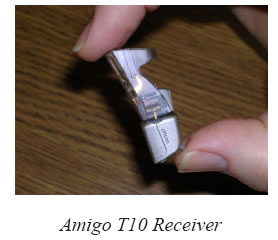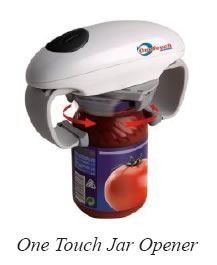|
Volume 16, No. 2, Spring 2008 |
Subscribe to AT Messenger Download PDF Viewer |
| PDF Version (for printing) Large Print (PDF) Text Version |
What's Inside . . . Volume 16, No. 2, Spring 2008
 Loaner FM Equipment Donated to DATI
Loaner FM Equipment Donated to DATI
Hearing aid technology has changed dramatically in the past five years with the inclusion of digital technology. More people with hearing loss have better, more beneficial access to the sounds around them. Multiple microphone arrays and noise suppression algorithms to hear better in noisy backgrounds are included in most mid-level and high-end hearing aids. However, these strategies have not yet conquered the difficult task of separating “noise” (unwanted or unimportant sounds) from the “signal” (speech that you are trying to understand). FM assistive technology remains the most effective way to gain access to speech in a noisy environment.
Places to Go & Things to Do In & Around Delaware
Well, it seems that summer is just around the corner, and many of us will be looking for places to go and things to do. I’ve put together a list of groups, organizations, and websites that you may find helpful in your quest for ideas in and around our First State. Now, I didn’t focus all of my attention on disability specific sites, which means you may need to take a bit of time making sure that your destination will meet all your needs. I also need to tell you that these resources are not presented in any particular order and their inclusion should not be interpreted as an endorsement.
 The AT Bargain Basement
The AT Bargain Basement
Friends! Delawareans! Countrymen! Welcome to another installment of the AT Bargain Basement, your home for assistive technology bargains. I am Marvin Williams, your guide through this world of bargains. To those of you ‘Basement regulars, welcome back! For those of you who are new to our little party, welcome and what took you so long? Since not everyone knows just what assistive technology, or AT, is, let’s start there. Assistive technology is anything that helps folks improve or maintain their functionality. It can be made, purchased, or customized. Also, it doesn’t have to be just one thing. It can be a system of devices that help someone.
The First State AIMs for Student Achievement
Children cannot learn if they cannot access the curriculum. Most schools depend heavily on print materials such as textbooks, leaving many students—such as those with vision loss, dyslexia, language learning disabilities, attention difficulties, or motor limitations—at a disadvantage. Federal special education law (the Individuals with Disabilities Education Improvement Act of 2004) now mandates that students with print disabilities must have alternative ways to access the information contained in textbooks and other print materials.
Homegrown in DELAWARE
This is a regular column that features products, projects, or services created right here in the First State. In this issue we feature the ModelTalker Speech Synthesis System, a revolutionary software package designed to benefit people who are losing or who have already lost their ability to speak. It allows people with ALS (Amyotrophic Lateral Sclerosis) or other conditions to create a synthetic version of their own voice for communication, or to choose a voice best suited to represent them.
Assistive Technology Services via DVR and DVI
The Division of Vocational Rehabilitation (DVR) provides assistive technology services as part of its vocational program and its independent living program. First, looking at DVR’s vocational program, eligibility criteria require that the individual have a significant disability that is a barrier to employment, the individual must want to seek employment, and must be of working age. The Delaware Division for the Visually Impaired provides assistive technology to people with visual impairments, and is required to provide items to individuals who are legally blind. This agency operates in a manner similar to DVR, providing vocational rehabilitation and independent living assistance.
Coast to Coast: Readers Share Tips to Make Home Life Easier
When you have vision loss, or live with someone who does, there are adjustments for everyone involved. Following are ideas shared by Sharing Solutions readers regarding changes they made to feel more secure and comfortable in their homes.
 21st Century Communications & Video Accessibility Act
21st Century Communications & Video Accessibility Act
In December 2007, the U.S. House of Representatives released a draft bill, the “Twenty-first Century Communications and Video Accessibility Act.” Publication of this draft legislation kicked off much action by the Coalition of Organizations for Accessible Technology (COAT), the disability coalition behind the agenda in this draft bill. As a comprehensive proposal covering telephone services—wire-line, wireless, and Internet—as well as television distributed over the Internet, in addition to some universal service funds initiatives, the provisions have elicited considerable interest by industry and consumer stakeholders.

